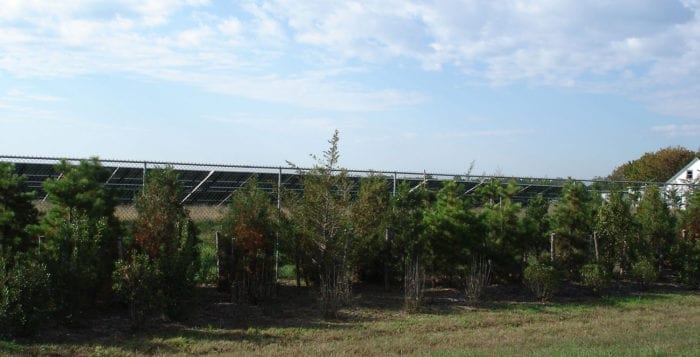The Long Island Power Authority is tied up in a battle with communities including Port Jefferson Village that host, by LIPA’s estimation, outdated and increasingly obsolete power plants with steep property tax sticker prices. After the release of a study on the possibility of refurbishing and repowering, among others, the Port Jefferson Power Station, the power authority now has the data to back up their assertions.
LIPA released its 2017 Integrated Resource Plan and Repowering Studies April 22, a report conducted by their partner PSEG Long Island’s engineers, energy specialists, planners and consultants, which was later independently reviewed by consulting firm the Brattle Group and the New York State Department of Public Service.

In August 2016, New York State Gov. Andrew Cuomo (D) mandated that 50 percent of the state’s electricity come from renewable energy, such as wind and solar power, by 2030. The study found that if LIPA were to achieve compliance, it would be overkill to cover times of peak demand that renewable sources couldn’t cover by repowering the Port Jefferson steam unit plant, which runs on oil or gas, and increasing its use. Currently the plant, which was built in the 1950s, is only used about 11 percent of the time. LIPA’s study suggested that number could be as low as six percent by 2030 if trends regarding the efficiency and availability of renewable sources of energy continue.
The study also concluded forecasts for peak demand are decreasing, due to an increase of energy efficiency products on the market for consumers, meaning the repowering of the Port Jefferson Power Station would not be necessary in years to come. The plant has the capacity to produce about 400 megawatts of power, and LIPA’s study said they need to add about 800 megawatts of renewable power sources to be compliant with Cuomo’s mandate by 2030 as is.
A lawsuit is currently pending that includes Port Jefferson Village and the Port Jefferson School District as plaintiffs against LIPA, associated with the power authority’s desire to pay less in property taxes at sites like the Port Jefferson power plant because of its condition and infrequent use. The village and district receive substantial amounts of revenue from property taxes because of the presence of the plant. The lawsuit alleges LIPA is breaching their contract, which runs until 2028.
The village has proposed that upgrading and repowering the plant with updated technology would be a fair compromise to allow them to continue receiving the same amount of revenue.
“A plant like this should really run about 80 percent of the time,” LIPA chief executive officer Thomas Falcone said in an interview. “In the ‘90s they were running about 50 percent of the time. Right now Port Jeff is running 11 percent of the time, which basically implies it’s running in the summer … it’s not to say we’ll never build another power plant, it’s just to say that these aren’t the right power plants to build. You put in all of this investment optimized around a plant that is going to run 24 hours a day. If it doesn’t run 24 hours a day it’s a very, very expensive plant, which is the wrong kind of plant.”
Falcone added LIPA still needs the plant, and utilizing more peaker units, which are meant to supplement other energy sources and are only used in times of peak demand using gas or oil, would be a sensible way to utilize Port Jefferson going forward. He said LIPA’s goal is to reach an amicable solution for everyone involved.
“We’re a state-run utility. We’re a state-owned, community-owned utility,” he said. “We find ourselves in a situation that is a real sticky wicket for everybody. The community obviously is entitled to compensation for hosting a power plant. On the flip side we have 1.1 million customers and I think only about 3,500 of those customers live in Port Jeff Village. So those other 1.1 million customers are also entitled to pay a fairer level of compensation and not an excessive one.”
Falcone and village Mayor Margot Garant both said settlement discussions are ongoing between the two sides, and Garant said a proposal was submitted to LIPA about 30 days ago.
“We’re a state-run utility. We’re a state-owned, community-owned utility. We find ourselves in a situation that is a real sticky wicket for everybody.”
— Thomas Falcone
Garant weighed in on the findings of the reports in a phone interview.
“We’re digesting these reports, we’re doing our homework and gathering data, and we don’t agree [with the findings of the report on the possibility of repowering],” she said. “Our concern is that report is driving a conclusion that they wanted to have instead of being objective.”
The Brattle Group issued a statement regarding the possibility of repowering.
“None of the plants are needed for reliability or economic purposes. For all the options the plant costs exceed their benefits for at least the next decade,” the statement said in part.
In March, Port Jefferson Village hosted two public hearings to allow residents to voice opinions on a petition issued by National Grid, another LIPA partner in delivering power to the island, to the New York State Public Service Commission asking for caps on peaker output to be lifted. Village residents and trustees contended at the time the move was a thinly-veiled effort to squash the hopes of repowering the steam unit.
Bob Foxen, chief executive officer of Global Common, LLC, was contracted by Port Jefferson Village to study the plausibility of a scaled-down plant that would utilize peakers and upgraded steam units at the current Port Jefferson site, a compromise that Falcone said he would be open to. Foxen’s study is ongoing.







